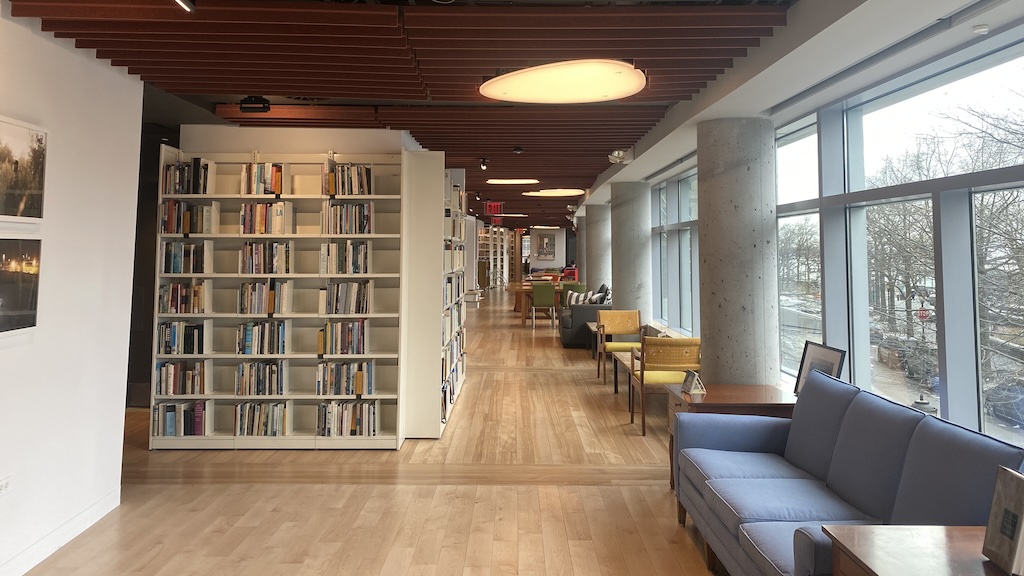Statue of Liberty Museum Connects Us With Our Past and Present


By Joseph Ferris
The Statue of Liberty has stood in New York Harbor since 1886, just three years after the Brooklyn Bridge opened and decades before skyscrapers rose from the streets of Manhattan. Since then, the statue has served a variety of purposes, represented a host of causes and issues, and gone under a series of physical alterations. The new Statue of Liberty Museum on Liberty Island captures this history through immersive theater, engaging exhibits and an opportunity to get up close to the statue’s original torch.
Nestled at the western end of the island and designed in such a way that it’s easy to believe the museum was carved out of a hill, visitors are greeted by a glass-fronted entrance and an exterior staircase leading to the rooftop landing. Once inside the museum, the visit begins with a 10-minute immersive movie. From 1860s France to present-day New York Harbor, viewers are introduced to the inspiration for the Statue, how it was designed and constructed, and the enduring role Lady Liberty has played as both a global representative of freedom and universal rights and America’s shortcomings in living up to those lofty ideals.
The museum’s four main messages are quickly evident even for those who just want to view the torch: how the statue was designed as a celebration of the abolition of slavery, how it came to be associated with immigration, how universal liberty is far from a reality, and the statue’s global impact.
There’s the section that reveals how noted French politician Édouard René de Laboulaye was so inspired by post-Civil War abolition that he landed on the idea of a statue to celebrate that achievement and the enduring bond between the two countries that were defined by 18th Century revolutions against monarchies. The story continues with sculptor Frédéric Auguste Bartholdi, the man who designed Lady Liberty. This part of the museum gives a sense of the magnitude of the project. From starting with three models increasing in size to commissioning Gustave Eiffel — he of that famous Parisian tower — to develop the statute’s interior steel structure to the perils of deconstructing the statue (it was literally stored in boxes and shipped across the Atlantic Ocean), this section is as close as you’ll get to setting foot inside Bertholdi’s studio.
Other sections capture the irony of a monument to freedom and liberty being the focus of celebration and the imagination of immigrants as the country failed to provide the vote to women and people of color and segregation remained the law of the land.
The collection on display features an array of antiques and souvenirs that were made in the image of the statue. There’s also a fun touch screen feature that allows you to scroll through movie posters like Escape from New York, magazine covers, and advertisements where Lady Liberty is featured prominently.
And then there’s the original torch. Standing just a few feet from this historic artifact, it is easy to get a deep appreciation for the 19th Century craftsmanship that went into putting it together. The metal latticeworks, rivets, and finishings visible around the ledge were created and installed by human hands almost 150 years ago. And today, this attention to detail previously seen only by a small collection of designers, construction workers, and restorers is now on view for the millions of tourists who visit the island every year.

Modified a handful of times over the first three decades it stood in New York Harbor, the changes to the torch were made to maximize the light emitted because Lady Liberty was pulling double duty in the harbor — she also functioned as a lighthouse.
The modifications were made in 1916 by Gutzon Borglum, the architect who designed Mt. Rushmore some two decades later. He added the amber-stained glass that sat atop where the sculpted flames first stood. The design failed to consider how natural elements could infiltrate the statue, creating structural problems which came to a head in the early 1980s. A multi-year renovation included a replacement of the original torch, which features a sculpted flame — Bertholdi’s original vision.
Standing on the museum rooftop with my eyes closed at the end of the visit, in the middle of New York Harbor, after experiencing more than 150 years of history, it was easy to go back to two days in the 1920s. In place of ferries shuttling New Yorkers to waterfront neighborhoods, the waters are instead filled with freighters bound for the Panama Canal and the west coast. Inbound are passenger ships. Some, such as the RMS Mauretania, were known for their luxurious amenities. Other workhorse passenger ships were filled with folks from across Europe seeking a new start. Even though their trip was far from over — agonizing customs approval at Ellis Island awaited, and many boarded trains in Hoboken and Jersey City for long rides to places like Buffalo, Chicago and Detroit — the statue signaled to them that they had arrived somewhere with the promise of a new start.
One of those ships carried my great aunt. A few years later, another carried my grandmother. If they were like other new arrivals to the country, they must have been glued to the ship’s statue side in an effort to catch a glimpse of Lady Liberty. Having come from a small Irish town, it surely was one of the tallests structures (if not the tallest) they’d ever set eyes on. They must have felt a rollercoaster of emotions — excitement for having made it, uncertainty at what the future held for them, and a homesickness for those they left behind.
Standing on the rooftop, the power of the museum struck me — its ability to connect us to the dramas of our past, our country’s past, and our past as a collection of people striving for something better.
Tags: attractions and museums, History, Lady Liberty, museums, Statue of Liberty, tourism

